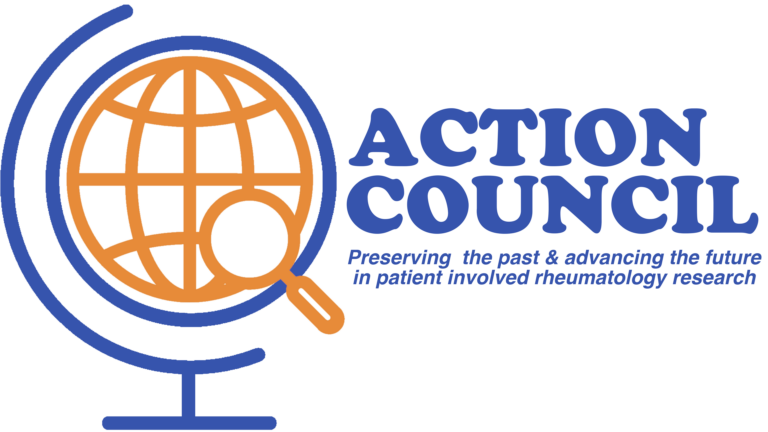Frameworks Pathway
Frameworks

Patients included in the regulatory process
While not specific to rheumatology, including patients in the regulatory process paves the way for advances in therapeutic outcomes.
- 2000: The European Medicines Agency (EMA) EMA is a decentralized agency of the European Union (EU) responsible for the scientific evaluation, supervision, and safety monitoring of medicines in the EU www.ema.europa.eu invites patients as committee members and the Food and Drug Administration (FDA)Food and Drug Administration’s (FDA) evaluation of new medicines (United States). During clinical trials, researchers study whether new medicines are safe and effective for patients and whether the medicine’s benefits outweigh the risks.
www.fda.gov expands the Patient Representative role to serve as consultants to scientific and regulatory reviewers. - 2003: EMA expands to patient inclusion in working groups.
- 2005: EMA establishes their first collaboration framework for regulatory practices between EMA and patients and consumers and their organizations, which was revised in 2014.
- 2006: The EMA establishes the Patients’ and Consumers’ Working Party (PCWP) EMA is a decentralized agency of the European Union (EU) responsible for the scientific evaluation, supervision, and safety monitoring of medicines in the EU. The Patients’ and Consumers’ Working Party (PCWP) provides a platform for exchange of information and discussion of issues of common interest between EMA and patients and consumers. www.ema.europa.eu, which provides a platform for the exchange of information and discussion of issues of common interest between EMA and patients and consumers. The PCWP provides recommendations to EMA and its human scientific committees on all matters of interest in relation to medicines.
CoPI: Working groups, regulatory reviewers, consumer reviewers
Context: Regulatory process
Experience working with patients in research leads to guidance for best practices
As a few years have passed since patient engagement in rheumatology began, guidance and recommendations are developed based on lessons learned.
- 2010: Patient Research Partner (PRP): As a result of patient-researcher collaboration with Outcome Measures in Rheumatology (OMERACT) OMERACT is a global community for the development of Core Outcome Sets in the field of rheumatology. Patients participate as research partners in all phases of the research and are equal members in any OMERACT working group.
omeract.org; omeractprpnetwork.orgin 2002, Eueropean Alliance of Associations for Rheumatology European Alliance of Associations for Rheumatology (EULAR) European Alliance of Associations for Rheumatology (EULAR) is the organization which represents the people with arthritis/rheumatism, health professionals (HPR), and scientific societies of rheumatology of all the European nations. The aims of EULAR are to reduce the burden of rheumatic diseases on the individual and society and to improve the treatment, prevention, and rehabilitation of musculoskeletal diseases. To this end, EULAR fosters excellence in education and research in the field of rheumatology. It promotes the translation of research advances into daily care and fights for the recognition of the needs of people with musculoskeletal diseases by the governing bodies in Europe.
eular.org publishes recommendations for patient-researcher collaboration and defines the role of Patient Research Partner (PRP)Patient Research Partner (PRP) is defined as a person with a relevant disease who participates or has participated as an active research team member on an equal basis with professional researchers, thus adding the value of experiential knowledge to a research project.
and defines the role of Patient Research Partner (PRP)Patient Research Partner (PRP) is defined as a person with a relevant disease who participates or has participated as an active research team member on an equal basis with professional researchers, thus adding the value of experiential knowledge to a research project.
De Wit M, et al. European League Against Rheumatism recommendations for the inclusion of patient representatives in scientific projects. Annals of the rheumatic diseases 2011;70(5):722-6.
eular.org Europe - 2010: The University of the West of England (UWE)The University of the West of England (UWE) rheumatology group is involved in projects of regional, national, and global significance.www.uwe.ac.uk rheumatology group publishes a dedicated paper Patient collaboration in the design of Patient-Reported Outcome Measures: Capturing the Experience of Fatigue in Rheumatoid Arthritis
Nicklin J, et al. Collaboration with patients in the design of patient-reported outcome measures: Capturing the experience of fatigue in rheumatoid arthritis. Arthritis Care & Research 2010;62(11):1552-8. on patient-researcher collaboration in the development of a new patient-reported outcome (PRO) for fatigue in rheumatoid arthritis (BRAF). United Kingdom. Measures were updated in 2017.Bristol rheumatoid arthritis fatigue scales (BRAFS) are free to use for clinical or academic reasons.
www1.uwe.ac.uk/ - 2011: European Alliance of Associations for Rheumatology (EULAR) EULAR is the organization that represents the people with arthritis/rheumatism, health professionals (HPR), and scientific societies of rheumatology of all the European nations. The aims of EULAR are to reduce the burden of rheumatic diseases on the individual and society and to improve the treatment, prevention, and rehabilitation of musculoskeletal diseases. To this end, EULAR fosters excellence in education and research in the field of rheumatology. It promotes the translation of research advances into daily care and fights for the recognition of the needs of people with musculoskeletal diseases by the governing bodies in Europe.
www.eular.org establishes the network of Patient Research Partners and develops patient engagement Reference Cards and Background document . Europe
. Europe - 2012: INVOLVEINVOLVE, Establishment 1996 and funded by the National Institute for Health Research (NIHR) to support active public involvement in National Health Services (NHS) public health and social care research. As a national advisory group, the role of INVOLVE is to bring together expertise, insight, and experience in the field of public involvement in research (PIR), with the aim of advancing it as an essential part of the process by which research is identified, prioritized, designed, conducted and disseminated.
www.invo.org.uk publishes updated briefing notes for researchers . INVOLVE notes some of the content is drawn from earlier editions is substantially different in its content, reflecting the changing environment since the original briefing notes were written in 2004. United Kingdom
. INVOLVE notes some of the content is drawn from earlier editions is substantially different in its content, reflecting the changing environment since the original briefing notes were written in 2004. United Kingdom
CoPI: Patient Research Partners (PRPs), Public Involvement in Research (PIR)/Patient and Public Involvement in Research (PPI)
Tools: Recommendations – patient-researcher engagement; Reports – patient researcher engagement; Guidance documents – patient researcher engagement and briefing notes
Context: Guideline development, Patient-reported outcomes (PROs)
Patient Engagement in the Regulatory Process – Tools Emerge
Patient testimony in the regulatory process expands in the second half of this decade and the Food and Drug Administration (FDA)Food and Drug Administration’s (FDA) evaluation of new medicines (United States). During clinical trials, researchers study whether new medicines are safe and effective for patients and whether the medicine’s benefits outweigh the risks.
www.fda.gov and the European Medicines Agency (EMA) EMA is a decentralized agency of the European Union (EU) responsible for the scientific evaluation, supervision, and safety monitoring of medicines in the EU www.ema.europa.eu join forces!
In addition to the European Medicines Agency EMA recently revising their original framework for interaction between the agency and patients and consumers and their organizations (2014) ![]() :
:
- 2015: The FDA launches the Patient Engagement Advisory Committee (PEAC)Patient Engagement Advisory Committee (PEAC) – Food and Drug Administration (FDA) committee providing advice to the Commissioner or designee on complex issues relating to medical devices, the regulation of devices, and their use by patients.
www.fda.gov/patients to provide advice relating to medical devices . CoPI: Patient Preference Information (PPI)PPI: Qualitative or quantitative assessments of the relative desirability or acceptability to patients of specified alternatives or choices among outcomes or other attributes that differ among alternative health interventions. is established to describe this patient engagement. PPI framework and guidance released for the Center for Devices and Radiological Health (CDRH)(CDRH) recognizes that scientists, clinicians, device developers, and regulators play critical roles in evaluating and communicating the benefits and risks of medical devices. However, only patients live with their medical conditions and make daily choices regarding their health care. Their voice and perspective are critical to understanding the impact of medical devices.
. CoPI: Patient Preference Information (PPI)PPI: Qualitative or quantitative assessments of the relative desirability or acceptability to patients of specified alternatives or choices among outcomes or other attributes that differ among alternative health interventions. is established to describe this patient engagement. PPI framework and guidance released for the Center for Devices and Radiological Health (CDRH)(CDRH) recognizes that scientists, clinicians, device developers, and regulators play critical roles in evaluating and communicating the benefits and risks of medical devices. However, only patients live with their medical conditions and make daily choices regarding their health care. Their voice and perspective are critical to understanding the impact of medical devices.
www.fda.gov/about-fda/fda-organization medical device decision-making. - 2016: FDA and the EMA create a new workgroup on patient engagement called the FDA/EMA Patient Engagement ClusterWork group that allows FDA and EMA to share best practices involving patients along drug and biologic regulatory lifecycles. Information that is discussed is covered by confidentiality agreements signed by the FDA and EMA.
www.fda.gov/patients to share best practices involving patients along with drug and biologic regulatory lifecycles. - 2017: FDA launches Patient Engagement Collaborative The Patient Engagement Collaborative (PEC) is a group of patient organizations and individual representatives who discuss how to achieve more meaningful patient engagement in medical product development and other regulatory discussions at the FDA. The PEC was established by the FDA and the Clinical Trials Transformation Initiative (CTTI), a public-private partnership that brings together organizations and individuals representing academia, clinical investigators, government and regulatory agencies, industry, institutional review boards, patient advocacy groups and others to develop evidence-based solutions to clinical research challenges. www.fda.gov/patients with the Clinical Trials Transformation Initiative (CTTI)The FDA, together with the Clinical Trials Transformation Initiative, established a group of patient organization and individual representatives to discuss topics focusing on enhancing patient engagement in medical product development and regulatory discussions at FDA.
www.ctti-clinicaltrials.org/ to develop guidance materials for including patients in the R & D continuum. This collaborative was modeled after the European Medicines Agency (EMA)’s Patients’ and Consumers’ Working PartyEMA is a decentralized agency of the European Union (EU) responsible for the scientific evaluation, supervision, and safety monitoring of medicines in the EU. The Patients’ and Consumers’ Working Party (PCWP) provides a platform for exchange of information and discussion of issues of common interest between EMA and patients and consumers. www.ema.europa.eu/en/committees.
for including patients in the R & D continuum. This collaborative was modeled after the European Medicines Agency (EMA)’s Patients’ and Consumers’ Working PartyEMA is a decentralized agency of the European Union (EU) responsible for the scientific evaluation, supervision, and safety monitoring of medicines in the EU. The Patients’ and Consumers’ Working Party (PCWP) provides a platform for exchange of information and discussion of issues of common interest between EMA and patients and consumers. www.ema.europa.eu/en/committees. - 2017: EMA involves young people in their activities and establishes the principles for the involvement of young patients, consumers, and their carers, in the Agency’s scientific committees and working parties in a consistent and efficient manner
 .
. - 2017: EMA begins holding public hearings to give European citizens a voice in the evaluation of the safety of medicines and empower them to express their views on issues related to the safety of certain medicines and the management of risks.
- 2017: EMA expands opportunities to acquire patients’ perspectives on benefit/risk considerations within the Committee for Medicinal Products for Human Use (CHMP)(CHMP) is the European Medicines Agency’s (EMA) committee responsible for human medicines. The CHMP replaced the former Committee for Proprietary Medicinal Products (CPMP) in May 2004.www.ema.europa.eu/en/committees meetings.
CoPI: Regulatory reviewers, working groups, advisory panels, Patient Preference Information (PPI)
Tools: Frameworks – regulatory; Guidance Documents – patient engagement
Context: Regulatory process, clinical trials, Research & Development, health technology assessment (HTA), decision aids, young adults



